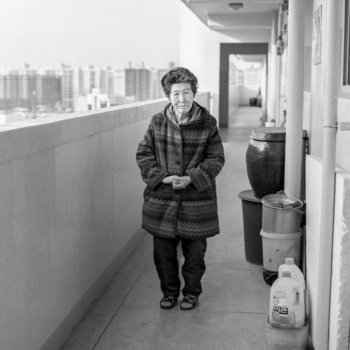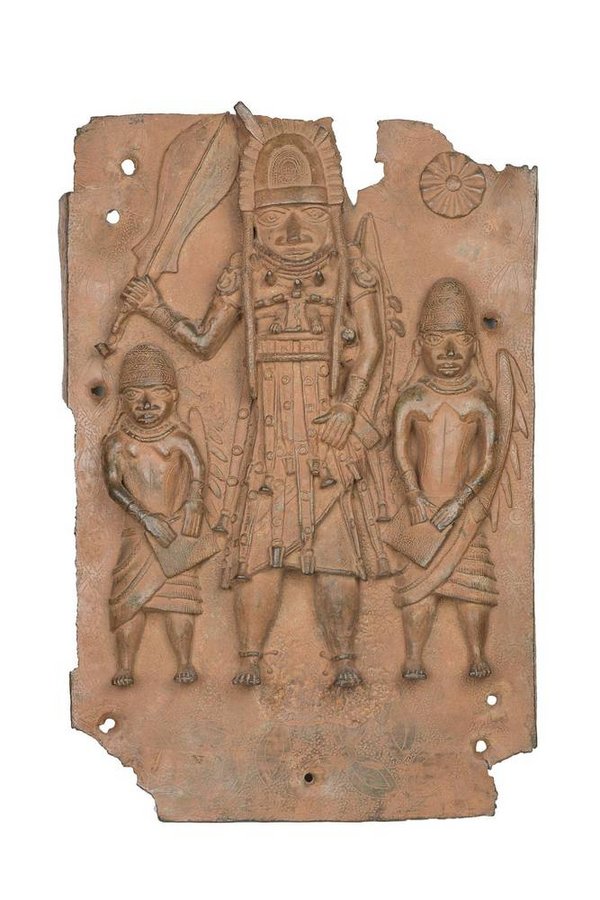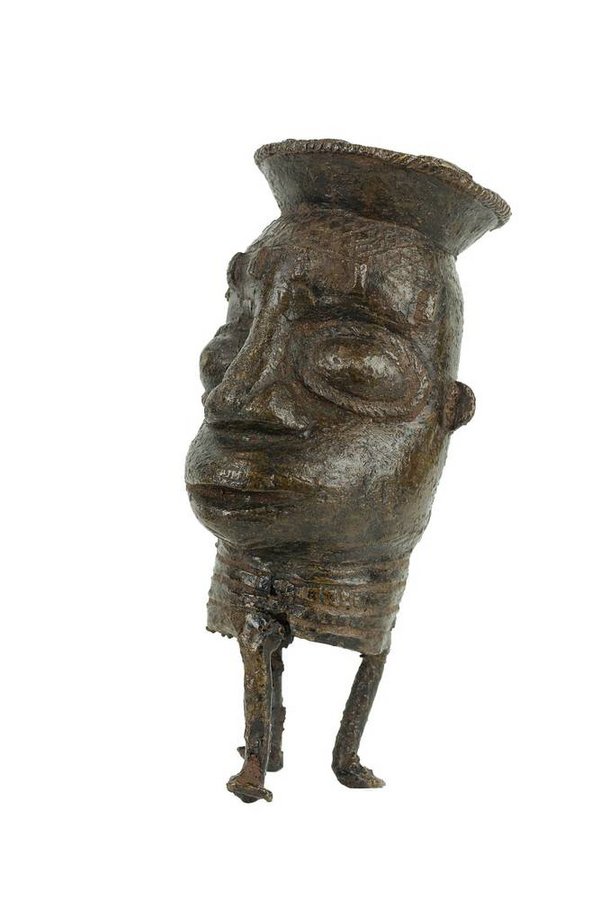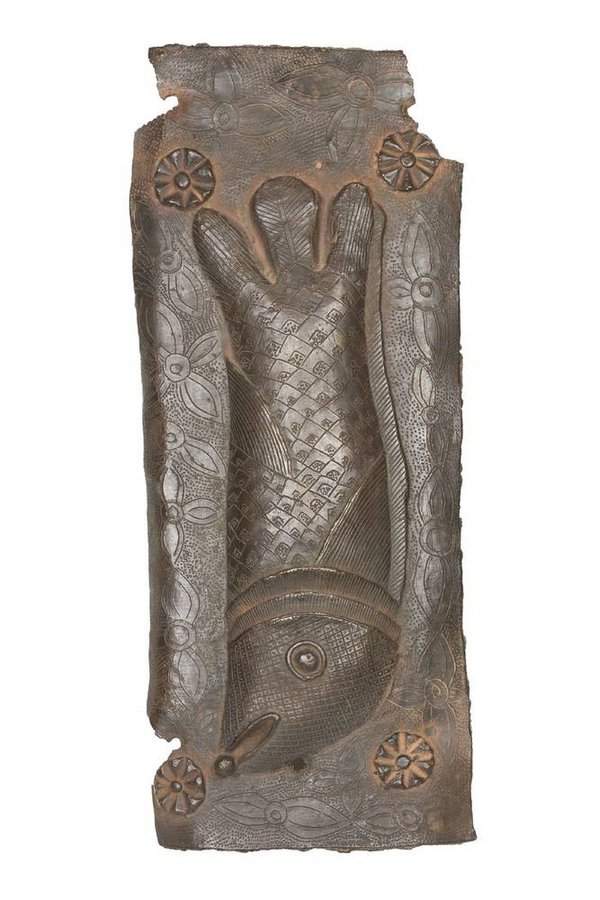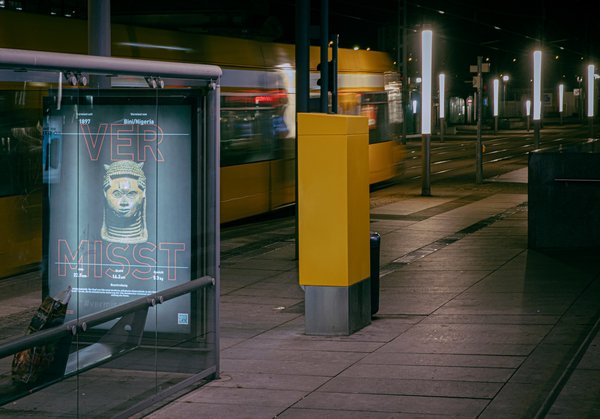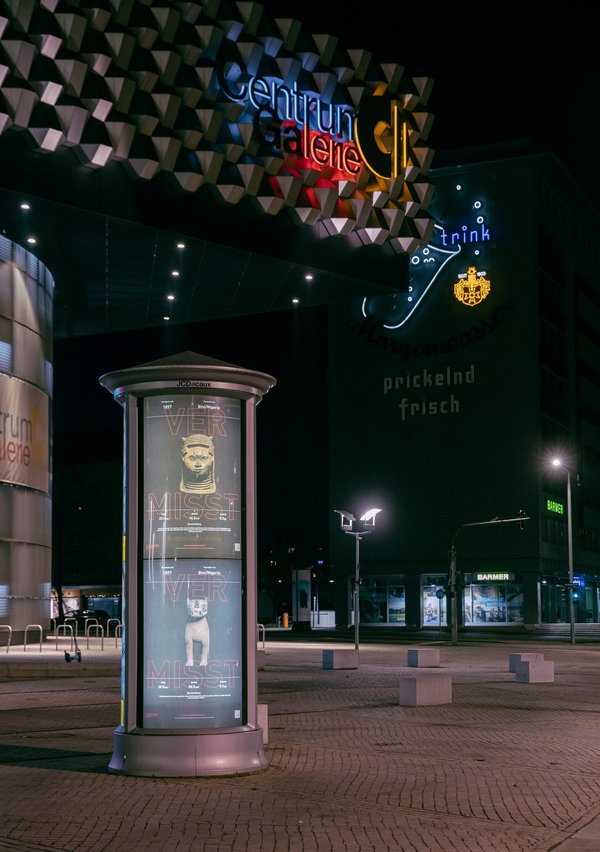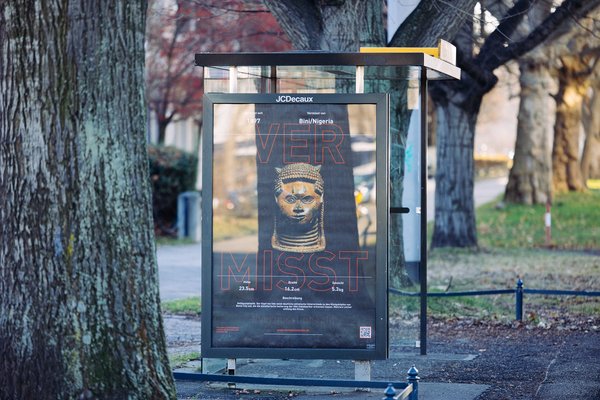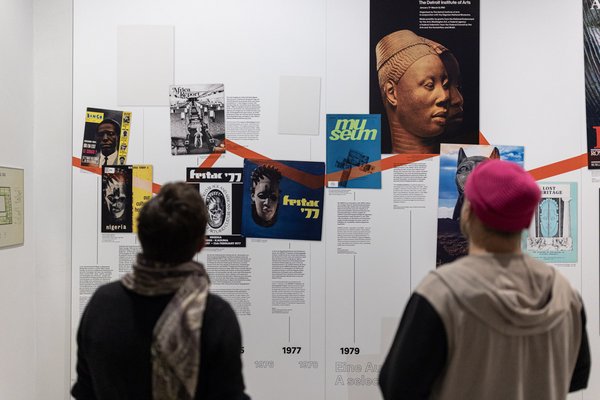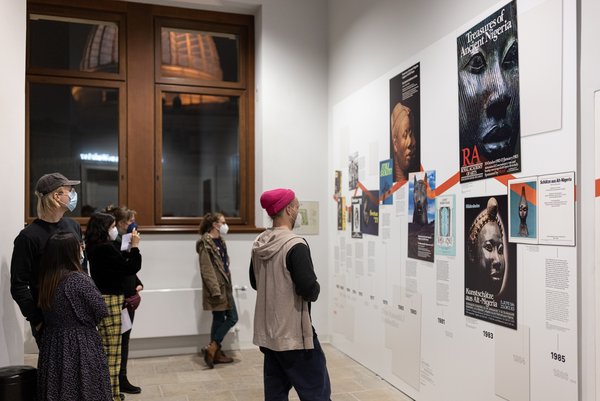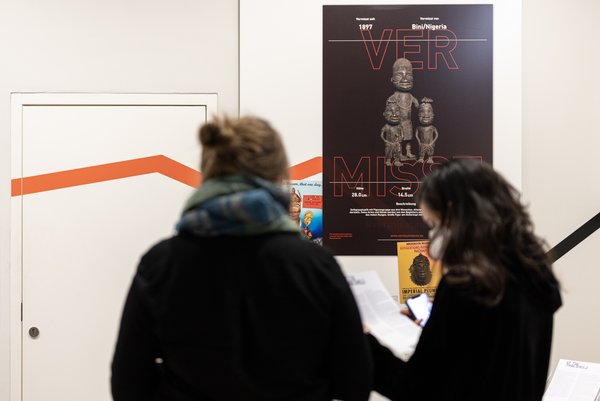The empire, the kingdom, the city and the people that produced those exquisite Bronzes, carved ivories and wood works, clay and iron sculptures are not in oblivion, but subject of ongoing restitution and repatriation requests. Located in the centre of Southern Nigeria is one of West Africa’s oldest kingdoms ruled by the second dynasty of kings since the 13th century. From the 15th century this kingdom was ruled by powerful kings, who controlled trade and all the means of production. They expanded the boundaries of the kingdom, while their influence reached the West African Atlantic coast. Before the contact with Europeans, these influential kings also extended to the Niger River in its Northern and Eastern flanks through trade and cultural intercourse. These kings were at the centre of socio-political and economic organisation of the kingdom to the extent that only the kings commissioned the production from the various manufacturing industries. Each sector was organised according to the guild system to meet the specific needs of the king. Hence, in the history of the kingdom several bronze and brass, ivory, wood, iron, and clay objects were produced for ritual and ornamental purposes. The uses of these cultural properties can still be seen in state and personal rituals among the people of the Benin kingdom. Therefore, the debate about repatriation and restitution of Benin Bronzes will not be complete without a mention of Benin kingdom and its people.
In 1897, when the kingdom was invaded by the British expeditionary forces, every altar and the king’s palace were looted and robbed of its sacramentals and ornaments. When the colonial administration that succeeded the invading forces became established in 1900, the officials went further into the nook and crannies of the capital of Benin Kingdom to “collect” the cultural properties of the people. Worst still in this looting spree was the use of ‘Christianity’ and ‘proselytisation’ to make the people believe that their culture and traditional religion were inferior. This was at a time when European businessmen, colonial administrators and Christian missionaries rushed into the venture of deceptive acquisition of cultural properties. Then they sold them to private collectors and ethnographic museums in Europe, from where they circulated globally.
Provenance studies have shown that there are records on inventories of possession and sales of Benin Bronzes in Europe, but none on inventories of collection and purchase in Benin City, where these objects originated from. The implication of this is illegal appropriation of cultural properties from a people whose social fabric revolves around the use of these cultural properties for economic, socio-political, and religious activities. Each object looted has a symbolic significance. Its absence leaves a void in the understanding and appreciation of the cultural heritage of Benin people. Aware of this, the National Government of Nigeria, the kings and people of Benin Kingdom, with the support of some European friends and colleagues have since 1935 requested, campaigned and conversed for the restitution or repatriation of Benin Bronzes. Issues raised in the decades of this restitution debate were firstly whether these antiquities should be repatriated with payment for compensation or whether there should be imposed a fee for their continued stay in European and American museums. Secondly, concerns have also been raised about the security of these antiquities if and when they were returned to Benin City. This refers to the standard and safety of the National Museums. Thirdly, questions have been asked about the legitimacy of the violent looting of cultural heritage before and during colonialism. Fourthly, in addition to safety issues, there were worries about the storage capacity of the museum in Benin City. Later on, the debate became a question of loaning, display and travelling exhibitions. At a stage, the campaigners also made efforts to buy back some Benin Bronzes. So far, all efforts, successes and encumbrances in the restitution and repatriation debates reflect concerns dear to the Benin people, who have been robbed of their cultural heritage.
Going down memory lane, some of the most symbolic gestures made and notable personalities that have contributed to getting these Benin bronzes back are worthy of mention. Worthy of commendation are HRM Oba Eweka II, whose quest for the reproduction of ritual objects looted in 1897 raised the first awareness of their cultural significance to the Benin kingdom, being part of the restoration of the Benin monarchy in 1914. Inspired by the restoration of the monarchy, late Chief Jacob Uwadiae Egharevba started the collection of Benin objects from the vestiges of the old city with a storage within the Oba palace. Egharevba’s effort served as a booster to the Oba Akenzua II as head of the Native Administration of Benin Division. Oba Akenzua II explored his friendly relation with the British colonial government in requesting the return of a royal stool.
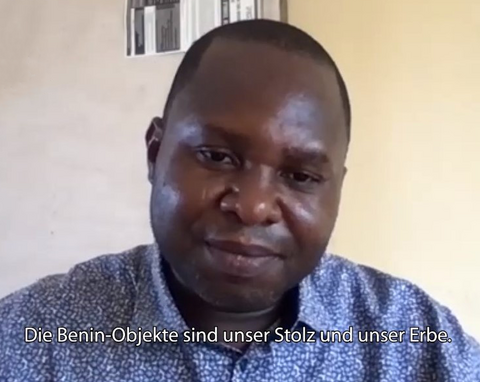
Interview mit Osaisonor Godfrey Ekhator-Obogie, 2021 © GRASSI Museum für Völkerkunde zu Leipzig, Staatliche Kunstsammlungen Dresden
Failing to get the stool, he was generously offered Oba Ovonramwen’s regalia by the Earl of Plymouth, Ivor Windsor-Clive. The contributions of G. N. Miller and Kenneth C. Murray in the 1935 campaign must be acknowledged too. Also, as the Director of the Department of Antiquities for the Colonial Administration, K. C. Murray facilitated the establishment of some stations of the Nigeria National Museums, including Benin City. Complementing the tireless efforts of K. C. Murray were patriots like Prof. S. O. Biobaku, then National Chairman of the Antiquities Commission of Nigeria under whose watch a museum was built in Benin City; Ekpo Eyo; Joseph Eboreime, etc. With the failed effort to get the Queen Idia mask for FESTAC 77 a renewed call started after a decade. This was the campaign led by Oba Erediauwa through his delegated representative HRH Edun Akenzua. This time there was an ally in Bernie Grant, a British Labour Member of Parliament, who staged a series of public campaigns in London. These campaigns lasted for years achieving a wider range of awareness until the end of the 20th century.
Since the Vienna exhibition curated by Professor Barbara Plankensteiner, a new phase of campaign evolved under the auspices of the Benin Dialogue Group (BDG) in 2007. This was the emergence of the 21st century continental group of advocates concerned with the essence of returning Benin Bronzes to the society of origin, with support and collaboration from the royal court of the Oba of Benin and the National Commission for Museum and Monuments (NCMM). The BDG have also had its fair share of challenges, but ultimately it has garnered more support than every other of the previous moves. In addition to the numerous curators from European Museums, HRH Professor Gregory Akenzua, Professor Abba I. Tijani, the various Nigeria High Commissioners across Europe, Mrs Edith Ekunke, former Director of Museum NCMM, and the Government of Edo State, Nigeria, Oba Ewuare II, through his delegate Prince Aghatise Erediauwa: They have all gone to the negotiation table with one goal, ‘to bring Benin Bronzes back home’. These collective voices speak about the ‘Edo people’s needs for the Benin Bronzes’. They speak of the looted historical records and cultural dislocation occasioned by the events of 1897 and global proliferation of Benin Bronzes thereafter.
What more for the future of Benin Bronzes? The historical Sarr and Savoy report and the German declaration on how to deal with the Benin Bronzes have been game changers to the restitution and repatriation debates. With these in mind, stakeholders within the museum sector and National Governments have largely acknowledged the proprietary right of society of origin. Convinced of these moves, institutions like the Smithsonian have written to declare their willingness to pursue the noble course of handing over the right of ownership to Nigeria. It is therefore expected that other nations and institutions shall follow this blazing train.
Also of interest:
Missing in Benin
Just before New Year 2020/2021, they began appearing on Dresden advertising spaces and remained hanging all over the Dresden city area until 11 January – 200 posters declaring that the five Benin Bronzes from the Museum für Völkerkunde collections were missing. The person behind the campaign, initiated by the Ethnographic Collections of the Free State of Saxony, was Emeka Ogboh. In our magazine August, he explained what his intentions were – we re-publish his interview here.
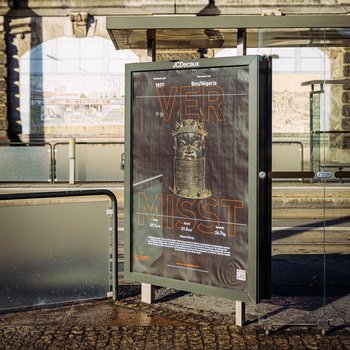
The refusal of time: restitution and the Kilimanjaro stone
Mike Mavura's article addresses the uncovering of a history obscured by colonialism. The focal point is the theft of the Kilimanjaro peak, which is given special space in the current exhibition of the reopened GRASSI Museum für Völkerkunde zu Leipzig.
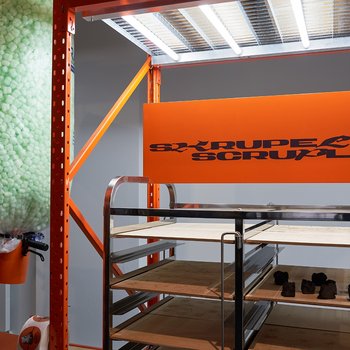
The Trail of Silence
They were known as “comfort women” – a phrase that conceals their sad fate. What they experienced they kept to themselves. Now, at last, they are making their voices heard: in an artistic work featured in the exhibition “Wordless – Falling Silent Loudly”. Laura Helena Wurth on a continuing trauma. A re-publishing from our magazine August.
